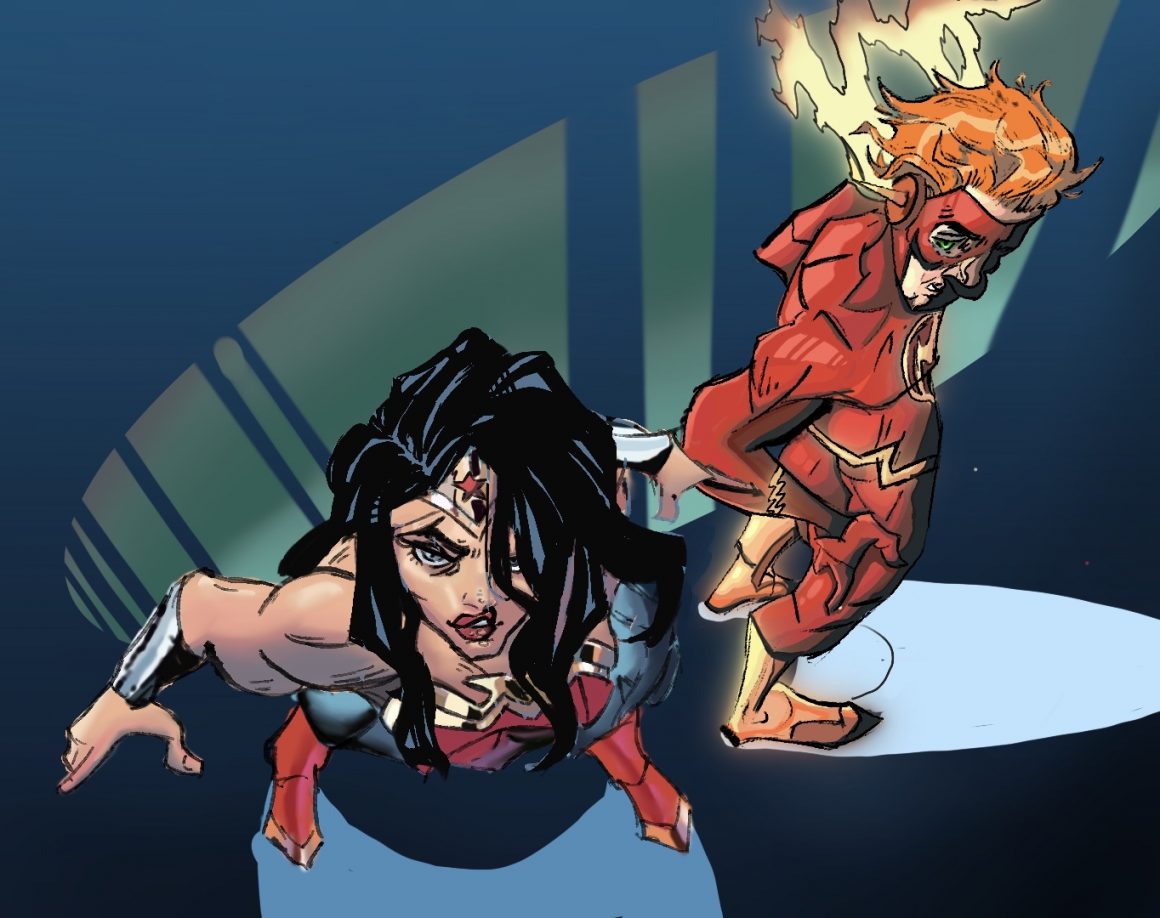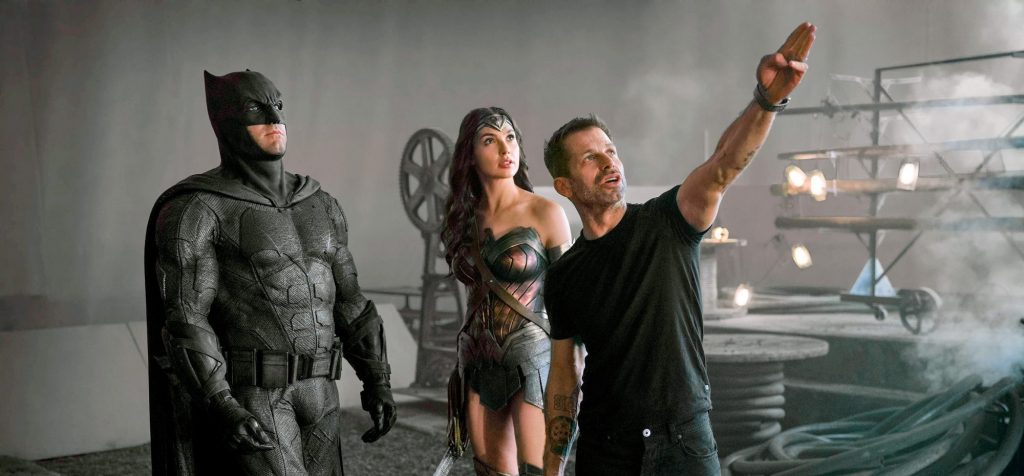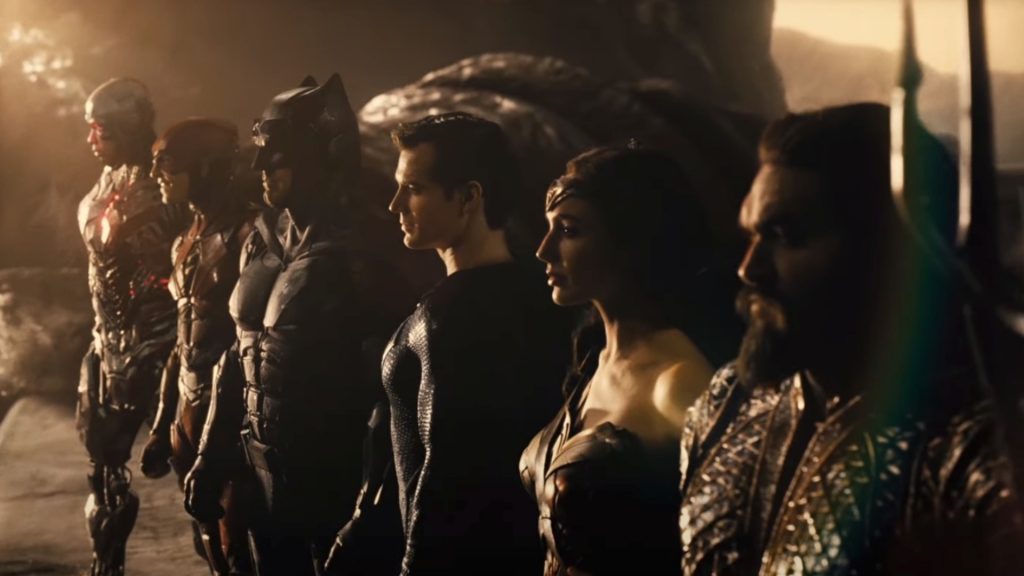
Overview and review of Zack Snyder’s Justice League
By Abdul Abbas, May 24, 2021—
It was only a year ago when DC film fans were still asking themselves if the Snyder Cut existed, if we’d ever see it and — if it did exist — would it be any good. Well, here we are a year later with the answers to all those questions. The anticipation of its release was overwhelming, with so much riding on it, could it live up to the hype? On March 18, Zack Snyder’s Justice League was released on HBO Max and Crave in Canada to massive success.
Before reviewing the Snyder Cut, one must know the story behind the film, which may actually be more interesting than the film itself. This is a huge compliment to the film as the events that took place behind the scenes of this film are almost too good to be true.
This sort of director’s cut release has never happened in Hollywood history. Warner Bros. Studios (WB) released Justice League in 2017, a Frankenstein-like film that credits Snyder as the director, which couldn’t be further from the truth. The studio lost faith in the visionary director and re-made the film by committee, which is when corporate executives with no creative background make a film they think will make the most money, with no regard for artistic value or resonance. The theatrically released film in 2017 was plagued with reshoots, filled with poor green-screen effects, a clear re-edit of Snyder’s story and tone to appeal to the largest audience possible and most notoriously, “Moustache-gate.” I can write an entire article on “Moustache-gate,” but a simple Google search will give you all the information and enjoyment you need.
In WB’s efforts to please everyone, they ironically pleased no one, financially or critically. The film currently has a 40 per cent rating on Rotten Tomatoes — not that an arbitrary number should influence your feelings on a film — and made only $658 million at the box office. That may sound like a large number, but once you factor in the mammoth $300 million budget, WB’s distribution deals for the film and the fact that the superhero-ensemble film was and is currently Hollywood’s biggest moneymaker, the film lost money for the studio. But films fail all the time and WB never saw a valid reason to put another penny into the film or even think about releasing the director’s cut, as releasing it would be an admission of guilt for the horrendous theatrical release of the film.
But then they launched their streaming service — HBO Max — and everything changed. They officially entered the “streaming wars,’ a race between all the major Hollywood film studios in creating their own streaming service. Like all other streaming services, they started clamouring for original content to rival the likes of Disney+ and Netflix. This was an unprecedented situation and HBO Max saw an opportunity. They had a project on their hands that, mind you, people were still arguing if it even existed or not — and it was more popular and had more audience interest than any project WB or HBO was working on at the time. That was an easy yes for HBO. They were sitting on a goldmine, a guaranteed success project and the Snyder Cut was HBO Max’s big-ticket event to rival the streaming big-hitters. That’s the story, WB and HBO Max saw potential in the #ReleaseTheSnyderCut movement and capitalized on it, gaining a massive number of subscribers and vindicating the Snyder Cut fanbase, in that order. Hollywood is a business and no project will ever be greenlit, no matter the popularity, unless the studio sees a potential profit that could come from it.

Now onto the review of the film.
It’s important to time when you watch this film, as it’s a whopping four hours long and starting it later in the day is not something I recommend — I started the film at 11 p.m., which was not a great idea. However, the pacing of the film is spectacular, making the four hours feel like two with its engaging characters, dialogue and action.
Snyder’s Justice League completes the three-film arc that began with 2013’s Man of Steel and 2016’s Batman v Superman, also known as BvS. However, this film feels more like a direct sequel to 2013’s Man of Steel than 2016’s BvS. BvS had strong political undertones with themes of identity, exploring Superman’s place in a world that doesn’t want him. The Snyder Cut is not as intellectually stimulating as its 2016 predecessor BvS, but where it lacks in intellectual gravitas it compensates in the raw humanity of its characters.
The cast is exceptional in this high-octane film. Starting with the returning cast, Ben Affleck makes his return as Batman/Bruce Wayne in an outing that feels like a natural progression from where we saw him last in BvS, operating as the guilt-stricken leader this time around and not the lone wolf we saw previously. Much like Affleck, Gal Gadot is right at home in her now-signature role as Wonder Woman/Diana Prince and her connection with Ray Fisher’s character adds yet another layer of complexity.
This is not a spoiler as it has been in all marketing material for this film, but Henry Cavill’s Superman is brought back from the dead in this film. Where we once saw this character struggling with his identity in earlier films, we now see that doubt gone as both Clark Kent and Superman settle into place in the world, officially completing his three-film story arc that began in 2013. Sporting a new black and silver suit this time around rather than his iconic blue and red suit was also a welcome surprise in a film full of surprises.
Clark/Cavill’s presence was sorely missed, given the fact that he’s dead for the first half of the film, which was very intentional. Superman’s return was a triumph, but what was even more of a success was how the film explored the return of the man behind the cape, Clark Kent. We see the lives of his mother and his fiancé in disarray in the wake of his death and how they’re dealing with their collective loss. There’s a duality to his return, where Superman’s return saves the world, but Clark’s return saves his family.
I just wish he had more interaction with the team than he did, which I found to be minimal at best. But that lack of interaction with the team is forgiven because the scenes with his mother and fiancé after his return were oh-so-beautiful.
It would be a disservice to speak about the new cast members and not speak about Ray Fisher first. Fisher undoubtedly delivers the stand-out performance in this superhero epic, playing at our heartstrings every chance he gets. His character, Cyborg/Victor Stone, is the “heart of the film” as Snyder puts it and I couldn’t agree more. His internal struggle is palpable, as Snyder doesn’t shy away from Cyborg’s feelings of dehumanization, which takes the film to a few uncomfortable places. Fisher is also at the center of the most visually stunning sequence of the film — I won’t give anything away here, but when you see it, you’ll know what I’m talking about.
If for nothing else, the four hour run time and the four year wait for this film was all worth Victor’s backstory. With Victor, Snyder avoids the fun and light exploration of a character’s newfound abilities commonly found in modern superhero films, but rather expertly explores Victor’s “burden of power” and the unspoken responsibility that he now holds.
Ezra Miller’s debut as Barry Allen/The Flash is a complete 180 degree change from what we saw in the 2017 cut of the film where it felt like he was in a different movie than the rest of the cast. The extra run-time affords his character the time and space he needed to flesh out his character’s motivations. For Jason Momoa’s Arthur Curry/Aquaman, while his character was as enjoyable as usual, his storyline felt the least changed from the 2017 theatrical cut of the film.
As the Hollywood saying goes, a film is only as good as its villain. 2017’s Justice League botched the villain character of Steppenwolf, completely changing the look of the character Snyder designed — which could only be done because the character is fully computer-generated. This time around, Steppenwolf looks like what he’s supposed to look like — a conqueror from an alien planet. The extra run-time benefits this character as it gives his motivations space to breathe, making him a more sympathetic and understandable character in the process.
This film’s worldbuilding is impressive, to say the least, which benefited from the four hour runtime. Zack Snyder’s Justice League doesn’t feel like a movie and I say this in the best way possible. It feels like a DC Comics omnibus, like a full HBO miniseries following each character and that’s because Snyder took advantage of his full autonomy of the film and pulled out all the stops. Is the background storyline of this film an “assembling the heroes to fight the big-bad” type plot? Yes, which it does in spectacular fashion, by the way. But at its core, it’s a character study of these titans who yearn to be human. It feels like multiple origin story films for each new character and a sequel for the returning ones, giving us a little window into their lives. We see Barry Allen struggling to come to terms with his father’s imprisonment, Victor Stone struggling with his humanity or lack thereof, Arthur Curry being torn between two worlds, Diana Prince trying to remain incognito and Bruce Wayne striving to redeem himself for the part he played in Superman’s death in the previous film.

Moving onto the technical side of the film, you would be mistaken to think that Snyder would skimp out on his signature over-saturated visuals, slow-mo shots and his grandiose framing.
The film’s musical score by Tom Holkenborg (Junkie XL) swung for the fences, with some big hits and also some notes I wasn’t so much of a fan of. The main theme was rallying, Superman’s remixed theme from 2013’s Man of Steel was a delight and the Flash’s theme near the end was a real showstopper. However, what I didn’t enjoy and felt very out of place was the orchestral note that played every time Wonder Woman was on screen. It pulled me out of the movie and felt very forced. Other than a few hiccups, the CGI in this film is great, benefitting from a four-year delay as the CGI technology has vastly improved since 2017.
Zack Snyder’s Justice League — a win almost as big as the story behind the film getting made — deserves all the coverage and positive reviews it’s received. It subverts most of the tropes that plague this genre, swinging big with every opportunity it gets, resulting in strong themes but may feel a bit bloated at times with its four-hours of story.
It sneakily presents itself under the guise of a big superhero blockbuster film, but this film has tons of genuine artistic value and thematic undertones that left me shocked. I found deep-cut references to Macbeth, All the King’s Men, Seven Samurai and so much more. It deals with heavy themes, amongst them trauma, guilt and redemption in a way that no modern superhero film can compete with.
As a small disclaimer, it’s important to say that if you’re not a fan of Snyder’s films to begin with, this film may not be what you’re looking for. But, if you’re coming into this film as a fan of the director and his films, Zack Snyder’s Justice League is a visual feast you wish will never end. Are my feelings toward the film somewhat influenced by the story behind the making of the film? Without a doubt, how could they not be? But the film stands tall, all on its own and the film is just as great whether you know about the #ReleaseTheSnyderCut movement or not.
I give Zack Snyder’s Justice League an 8 out of 10.
